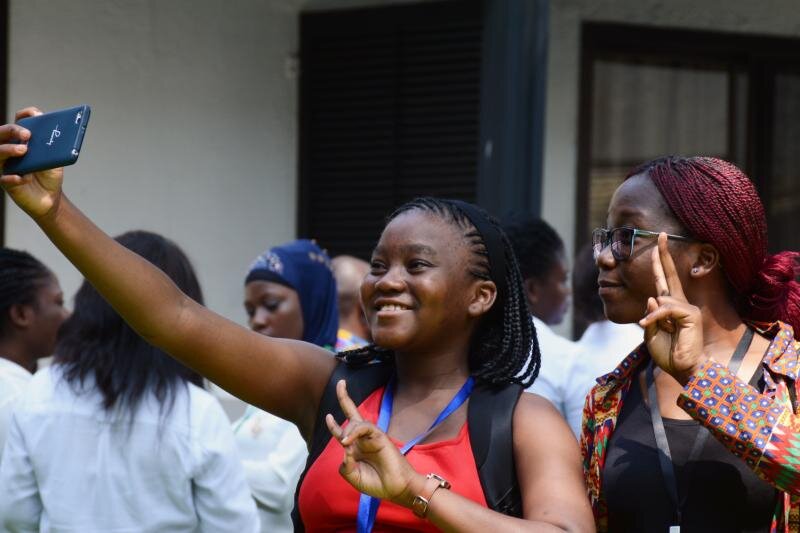Photo courtesy of Plan International
“Saga, call 911. Call 911!” she screams. Stuck in her car after an accident, she needs help. But her voice assistant does nothing, doesn’t react. Her high-pitched screams are octaves above what Saga can register. No help arrives – reality in our future of unequal tech.
There is no such thing as neutral technology. Technology is inherently biased, its creators reflected in the final product.
With a tech sector dominated by men and motivated by profit, the result is gender-biased tech products and online spaces rife with abuse. From social networking spaces where girls and women can’t speak out for fear of harassment and abuse, through sexist voice assistants, to credit rating algorithms that discriminate against women - examples of discriminating tech abound.
TECHNOLOGY MUST PROMOTE EQUALITY
But what if tech could do the opposite? What if, instead of contributing to the deepening of inequalities, we created tech that advances gender equality?
Not tech for women, like period apps, nor tech that enables us to do good better, like chatbots that can increase the reach of our positive messages. But tech for everyone that nudges us not to discriminate, marginalise or violate – tech that helps us advance equality.
What could such tech look like?
A few years ago, we launched Sheboard, a mobile keyboard that uses predictive text to promote the use of empowering language in the context of girls and women. Research shows that how we speak to girls and boys often reinforces gender stereotypes. We realised that predictive text apps – which constantly learn from what we type – can further entrench these harmful stereotypes. So instead of suggesting completing the sentence “Girls are...” with “cute” or “pretty”, Sheboard suggests more empowering words, like “adventurous” or “capable”.
WE NEED EQUALITY TECH
Sheboard is an example of Equality Tech – technology that, in itself, advances equality. Now, we’re looking for other tech solutions that do the same.
Perhaps a feminist voice assistant that stands up to harassment? A social bot that that asks if you really want to post that abusive tweet? Or a social network that aims to eliminate gender-based violence by design?
We don’t know. But given we can create, in many cases inadvertently, all this misogyny-normalising tech, surely we can do the opposite?
The fact is we need more biased tech, not less. But tech that is biased in favour of equality and inclusion, and whose bias is open, transparent, and can be queried.
SOCIAL MEDIA PUTS GIRLS AT RISK
Social media platforms are where this type of tech is desperately needed. Women are 27 times more likely than men to be harassed online* and almost three quarters of women have experienced some form of online violence*. As a result, girls and women are self-censoring and even withdrawing from these spaces, leaving online discussions without female perspectives.
How can these spaces live up to their promise of collaboration and community? We need to address not just behaviour on the platforms but their digital infrastructure too.
Social media giants are slowly waking up to this need. Twitter recently introduced a variety of features to hide offensive content, while Instagram now allows users to restrict their visibility while warnings are issued to users about to post harmful content.
But all of this is tinkering on the backend, not addressing the fundamental design of these spaces. Moreover, new developments are not always positive. Twitter recently announced it was testing “Fleets”, tweets that disappear within 24 hours. Activists quickly highlighted this feature could enable new ways of abuse without consequences.
DIVERSITY IS KEY TO PROGRESS
Key to the creation of safer, empowering online spaces – and Equality Tech more broadly – is more diversity amongst the creators of technology.
From an early age, we must include girls in tech. We must change the image of tech as an inherently male domain and address discriminatory norms and structures that keep women from entering and advancing in the tech sector, as well as from raising funding for their products.
We also need to scrap the idea that tech is neutral. It is not. Social networking sites were not designed and developed to advance equality. They use vast amounts of user data generated on their platforms to enable advertising, and thereby make profit. They are not leveraging that data to combat abuse on their platforms. But they could – just like Saga, the imaginary voice assistant, could be designed to recognise a wider vocal range.
So instead of railing against how biased tech can amplify inequalities, let’s embrace the bias inherent in any tech solution and use it to advance equality. Let’s create Equality Tech.
This post was originally published on the Plan International website for Girls in ICT Day 2020.






